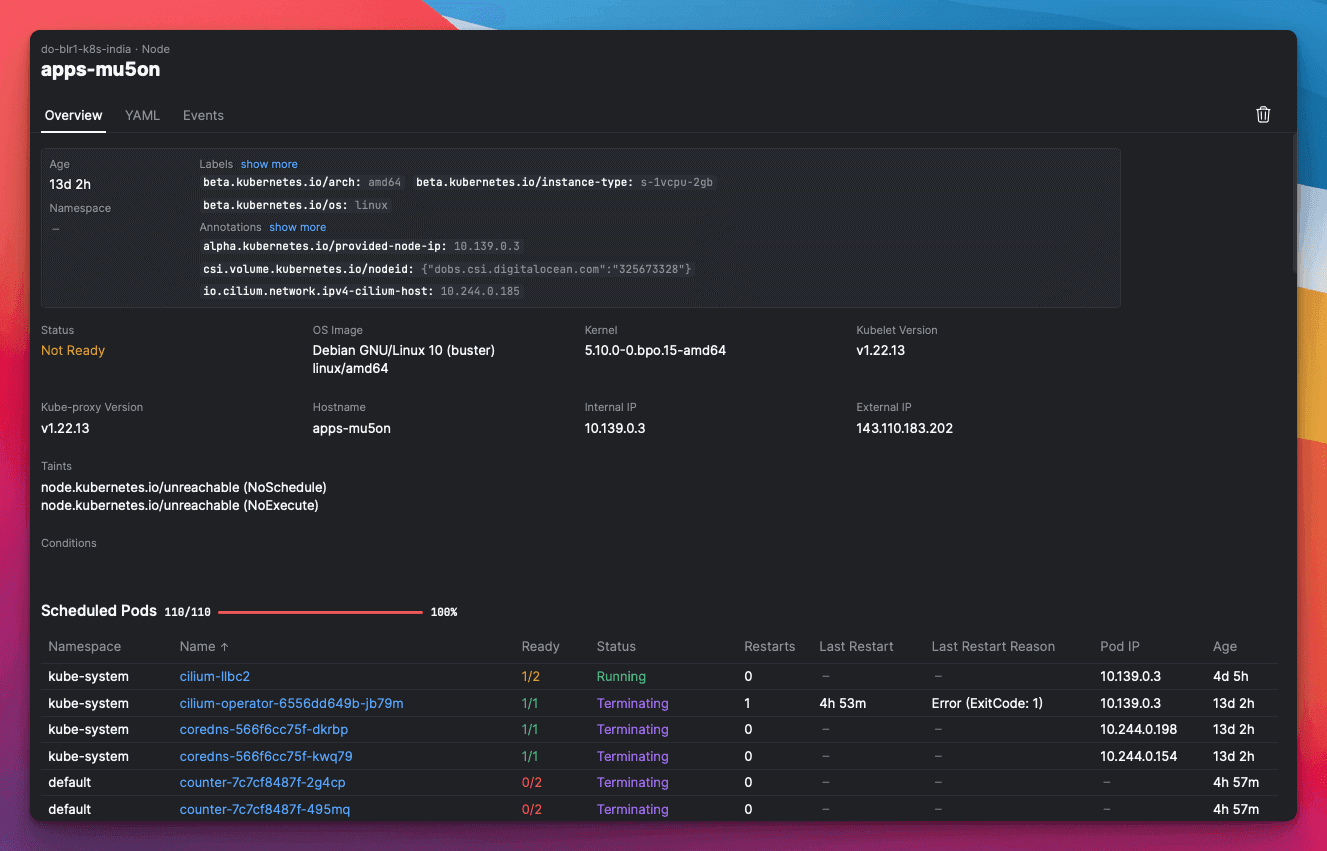YAML claims to be a human-readable data-serialization language, and to be fair, it's a lot more readable than JSON. But it's not as readable as it could be, especially with very long ones like a Pod YAML.
As Aptakube is a GUI (Graphical User Interface), we can make use of different elements and colors to better represent a resource's state. A simple example is the use of green for a running Pod and a red for a failed Pod.
Resource List View
In Aptakube everything starts with the List View, where you can see all resources of a specific kind, such as Pods, Deployments, Services and even all Custom Resources. You can filter the list by name and other columns, as well as switch the current namespace.

The example above is the Pod List View, where pods from multiple cluster are shown in one view. It's easy to see a few pods are in a bad state, given that they are red. The "Restarts", "Last Restart" and "Last Restart Reason" columns are also very useful to quickly how often, when and why it restarted.
Every resource has it's own List View with different columns and insights, but they all have the same basic functionality and navigation.
Resource Details View
Every resource also has a human-friendly details view that shows all the important information in an easy to see and understand format. It's a great way to get a quick overview of a resource in your cluster.
On the example below you can see the view of a cluster node. It shows the node's name, the internal and external IP address, along with other Node specific information. It's easy to spot the node's status, as it's color-coded. In this case, the node is in a Not Ready state, because the node is unreachable.
The Node View also gives you a quick overview of the pods scheduled on the node, as well as their status. This node already reached the maximum number of pods it can schedule.

Here's an example of a Pod View, more especifically a container within that Pod. It shows the container's name, the image it's using, the container's status and other relevant information.
Containers can have statically defined environment variables, or they can reference a Kubernetes ConfigMap or Secret. Aptakube automatically expands the ConfigMap and Secret references, so you can see the actual values, without having to jump between views.
YAML Editor
Aptakube also has a YAML editor, where you can view and edit any resource in your cluster. It's a great way to quickly make changes to a resource, without having to switch between the GUI and the CLI.
Overall we still recommend the usage of Automation, CI/CD and GitOps to manage your resources, but sometimes you just need to make a quick change to a resource, troubleshoot or debug something, and the YAML editor is a great option for that.
